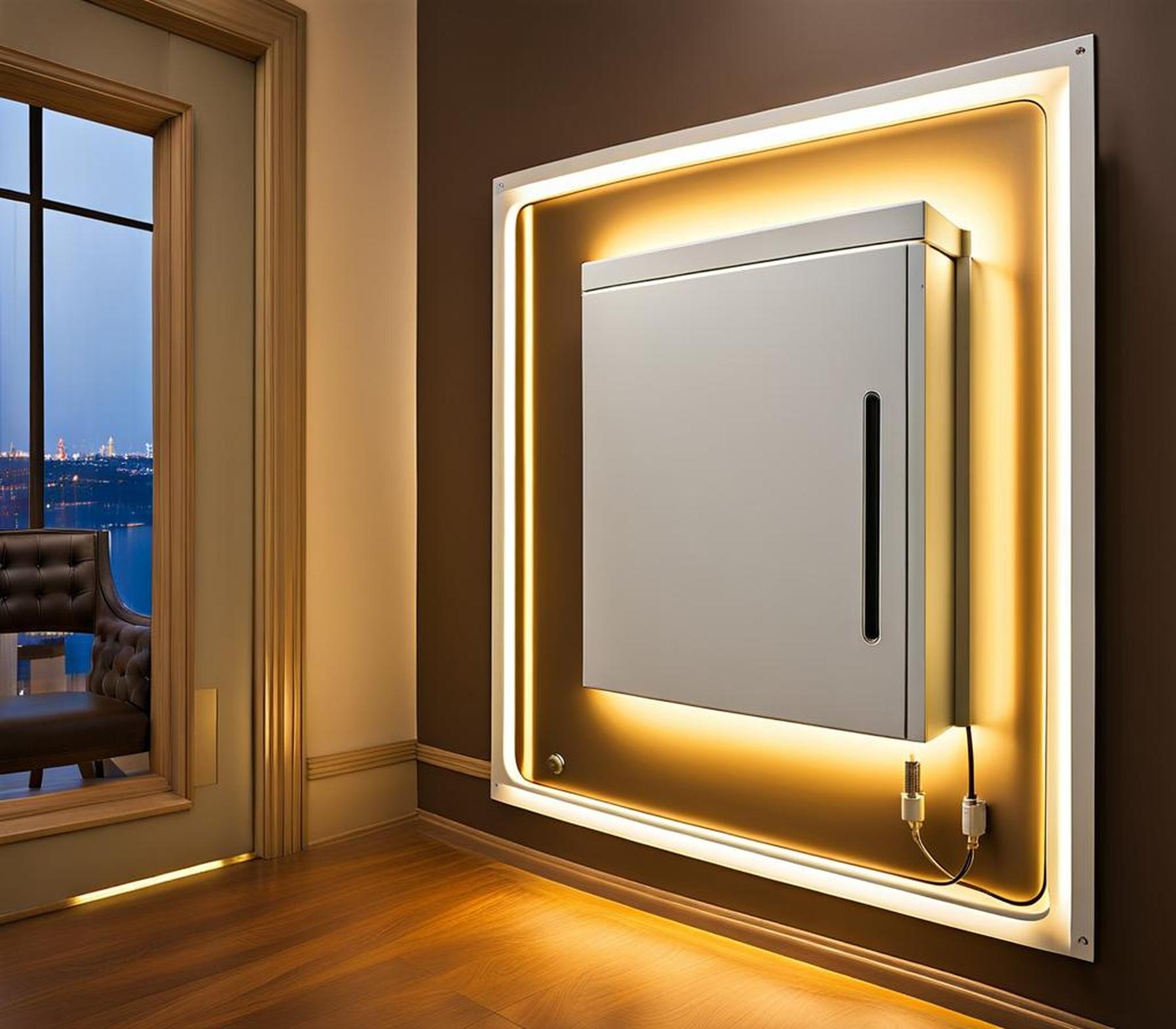Installing or replacing a vanity light in the bathroom can immediately upgrade the space with better lighting for tasks like applying makeup and styling hair. However, ensuring the electrical box used to mount the new vanity fixture is properly chosen and installed is a critical safety consideration that cannot be overlooked.
Follow along for comprehensive guidance that will set your next vanity lighting project up for long-lasting success.
Determine Type of Electrical Box Needed
Vanity lights are generally mounted above the sink on the wall or sometimes on the ceiling. The orientation and location of your planned fixture will inform the specific shape and duty rating of the required electrical box.
Boxes Designed for Light Fixtures
There are several varieties of electrical boxes made to securely host light fixtures:
- Round and octagonal fixture boxes for mounting on walls and ceilings
- Fan-rated boxes that support the weight of ceiling fans and lights
- Boxes with integrated LED drivers to easily power LED vanity bulbs
Factors Influencing Type of Box
Consider the following factors when deciding on the optimal electrical box for your vanity light:

- Mounting location – wall above the sink or ceiling
- Weight and hardware needs of the vanity light fixture itself
- Available space and required clearance around the electrical box
Special Considerations
Bathroom vanity lights call for electrical boxes with special properties:
- Water-resistant boxes rated for damp locations prevent moisture damage risks.
- Smart technology wiring capacity enables fixtures with amenities like WiFi and voice control.
Choose Appropriate Size of Electrical Box
The volume capacity of the electrical box determines if it can physically fit all of the wiring and connectors needed for proper functionality.
Code Requirements for Box Size
Local electrical codes provide legal guidelines dictating minimum box sizes based on:
- Total number of wires contained
- Need for extra internal capacity beyond what will be occupied initially
Calculate Volume Needed
Take an inventory of everything that will need to fit inside your vanity light electrical box:
- Add up the individual volume demand of wires, wire connectors, devices, clamps, unused accessories etc.
- Factor in additional spare room for easy manipulation of components during future maintenance work
Standard Box Sizes
Some common electrical boxes with their standard volume capacities:
| 4″ Round Pan Box | 12 cubic inches |
| Single-Gang Box | 20 cubic inches |
| 4″ Octagonal Box | 14 cubic inches |
Size up to the next biggest option if your calculated space needs exceed the available volume.
Evaluate Mounting Methods
The procedure used to physically attach the electrical box impacts the stability it can provide for supporting your vanity light.
Mounting Locations and Orientation
Consider optimal placement such as:
- Centered above the sink basin
- Ideal height for the planned light fixture
- Any necessary lateral offsets from mirrors or cabinets
Different Mounting Methods
Secure boxes firmly using methods like:
- Screwed directly into wall studs or blocking
- Hollow wall anchors for gaps without backing structure
- Direct ceiling mounts for decorator ceiling fixtures
Load Bearing Considerations
Reinforce attachment where needed for heavy fixtures:
- Support 50+ pound lights with specialized fan-rated boxes
- Brace box against ceiling joists or solid blocking
This distributes weight safely to the underlying building framework.
Make Safe Wiring Connections
Making neat, secure electrical splices and connections prevents hazards from short circuits and loose wires down the line.
Basics of Electrical Wiring
Ensure proper techniques like:
- Stripping wires properly without nicking copper
- Matching corresponding hot, neutral, ground wires
- Capping off unused wires with wire nuts
Also confirm bathroom circuits have modern GFCI protection against electric shock.
Neat and Secure Wire Management
Prevent messy tangles using organizing methods like:
- Cable clamps anchoring wire bundles
- Routing wires around the box perimeter
Accessibility Within the Box
Evaluate if there is adequate access to make connections by checking for:
- Sufficient room to fully seat wire connectors
- Absence of razor-sharp metallic box edges
Special Considerations
Modern bathroom vanity light features introduce unique specifications for electrical boxes beyond traditional needs.
Damp Location Rating
Humid bathroom environments demand water-resistant electrical boxes prevented from moisture ingress with properties like:
- Watertight gaskets around openings
- Drip edges diverting condensation buildup
- Rustproof galvanized steel construction
Smart Technology Compatibility
Accommodate modern connectivity and capacity demands with boxes like:
- Additional gang space for smart switches and accessories
- Integrated volume to hide WiFi transmitters
Energy Efficient Options
Support new energy-saving LED vanity bulbs efficiently using electrical boxes with attributes such as:
- Preinstalled LED driver units simplify retrofits
- Capitalize on smaller fixture profiles needing less space
Choosing the optimal electrical box ensures your new vanity light has reliable power and sturdy installation. Take the time upfront to evaluate all the options and installation considerations covered here before mounting any fixtures.
For perplexing situations, don’t hesitate to call in a professional electrician to assist with getting the right box properly wired and secured.
